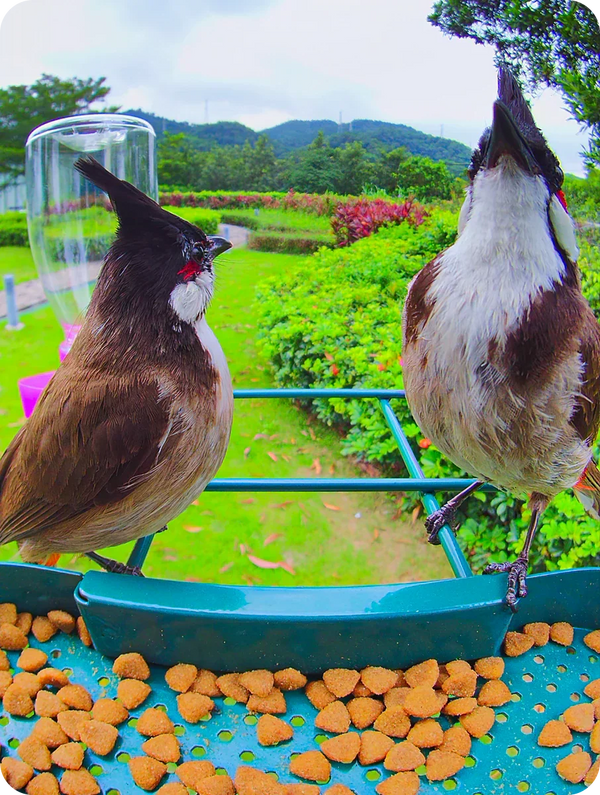Unlock the Secrets of Birdwatching: Discover the Fascinating World of Feathered Friends!
Birdwatching is more than just a hobby; it’s a gateway to experiencing the beauty of nature up close and personal. As more people find solace in the outdoors, birdwatching has surged in popularity, attracting enthusiasts of all ages. Whether you’re a seasoned observer or just starting, identifying birds can enhance your appreciation of these captivating creatures. Understanding bird identification not only enriches your birdwatching experience but also fosters a deeper connection with the environment. With so many species around us, each with its own unique behaviors and characteristics, embarking on the journey of bird identification promises to be both rewarding and educational.

The Basics of Bird Identification
To begin your journey into bird identification, it's essential to familiarize yourself with the fundamental concepts that will aid you in recognizing different species. Start by observing key features such as size and shape; larger birds like the majestic bald eagle will stand out compared to smaller songbirds like sparrows. Next, focus on color patterns; the vibrant reds and blues of a cardinal are unmistakable, whereas the subtle browns of a sparrow can be more challenging to discern. Pay attention to the bird's behavior as well—how it feeds, its flight patterns, and its calls can provide crucial clues. For instance, the way a woodpecker clings to trees can help you identify it quickly. Remember, practice makes perfect; the more time you spend observing, the more adept you will become at recognizing the diverse avian life around you.
Common Bird Species to Observe
As you venture into birdwatching, you’ll likely encounter several common species across various habitats. The American Robin, known for its bright orange belly and melodious song, is a favorite among many birdwatchers and can often be found in gardens and parks. Another ubiquitous bird is the Northern Cardinal, easily recognizable by its striking red plumage and distinctive crest. If you’re near water, keep an eye out for the Great Blue Heron, a tall, elegant bird that often stands still while fishing. In wooded areas, the Black-capped Chickadee, with its cheerful call and small size, is a delightful sight. Lastly, the Mourning Dove, characterized by its soft cooing and graceful flight, can be seen in open fields and suburban areas. Each of these species has its unique charm and behaviors, making them exciting to observe and identify.
Tools and Techniques for Birdwatching
Having the right tools can significantly enhance your birdwatching experience. A good pair of binoculars is essential for observing birds without disturbing them. Look for binoculars with a magnification of around 8x to 10x for an optimal balance between field of view and detail. Additionally, investing in a comprehensive field guide can be invaluable; these books provide detailed information about various species, including illustrations and descriptions of their habitats. Techniques such as patience and stealth are equally important. When approaching birds, move slowly and quietly to avoid startling them. Learning to recognize bird calls can also greatly improve your identification skills. For instance, once I learned the distinctive call of the American Woodcock, I found it much easier to locate this elusive bird during its mating season. By honing these skills and using the right tools, you can transform your birdwatching outings into truly immersive experiences.
Conservation and Birdwatching
Birdwatching plays a crucial role in conservation efforts worldwide. By observing and documenting bird species, enthusiasts contribute valuable data that can help researchers track population trends and understand ecological changes. Additionally, many birdwatchers participate in citizen science projects, such as annual bird counts or habitat restoration initiatives. These efforts not only aid in the protection of bird species but also promote awareness of the importance of preserving natural habitats. For instance, after a friend of mine got involved in a local birdwatching group, she discovered her passion for habitat conservation and began volunteering to restore wetlands in our area. This firsthand experience showcases how birdwatching can lead to meaningful contributions to environmental preservation. By engaging in these activities, you can help ensure that future generations will also have the opportunity to enjoy the beauty of birds in their natural habitats.
Exploring the Joys and Importance of Birdwatching
Birdwatching is a delightful and enriching pursuit that opens up the wonders of the natural world. From learning the basics of bird identification to understanding the significance of conservation, the journey offers endless opportunities for discovery. As you step outside and explore your local birdlife, remember that every sighting is a chance to learn and connect with nature. Whether you're identifying a familiar songbird or spotting a rare species, the joy of birdwatching is boundless. So grab your binoculars, head outdoors, and immerse yourself in the enchanting world of birds—there's so much waiting to be discovered!







